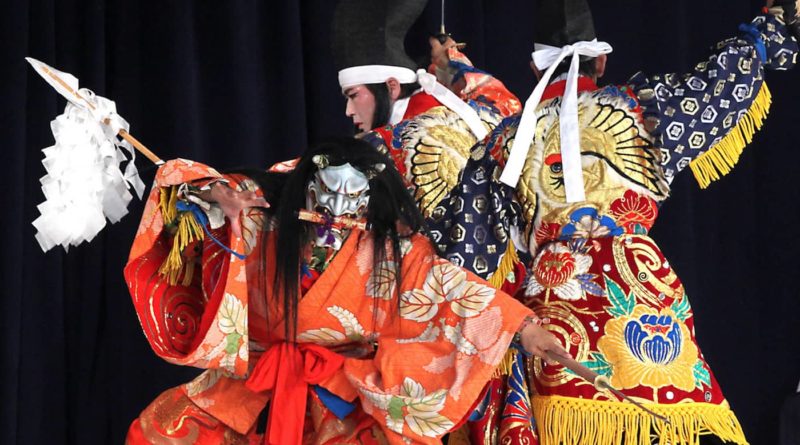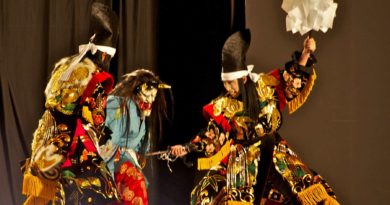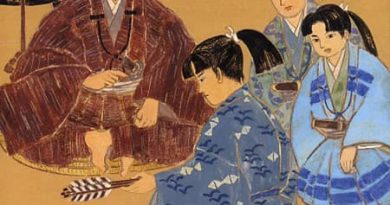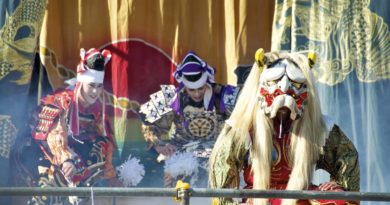Takiyasha-hime: Sorcery and revenge in medieval Japan
A look at the origins and story of Takiyasha-hime (Princess Takiyasha), a staple of the repertoire of the Kagura folk art troupes of northern Hiroshima.
Takiyasha-hime was the daughter of Taira no Masakado, considered to be Japan’s first samurai. A powerful landowner in the Kanto region, Masakado, unhappy with the extravagance of the Heian court in Kyoto at a time when the peasants across the land were living in poverty, led a rebellion against the emperor and attempted to establish an alternative court. The attempt, however, was ill fated and Masakado was killed in battle in 940. Despite the Masakado’s entire family being branded traitors to be executed, his son and daughter managed to escape the capture by the forces of the central government.
The legend of Takisha-hime is a tale of Masakado’s daughter’s attempt, through sorcery, to avenge her father’s death. Very popular in the Edo period, various tellings of the story are depicted in books, woodblock prints and in kabuki plays. Perhaps one the most famous depictions is the woodblock triptych Takiyasha the Witch and the Skeleton Spectre (相馬の古内裏 妖怪がしゃどくろと戦う大宅太郎光圀) by Utagawa Kuniyoshi.
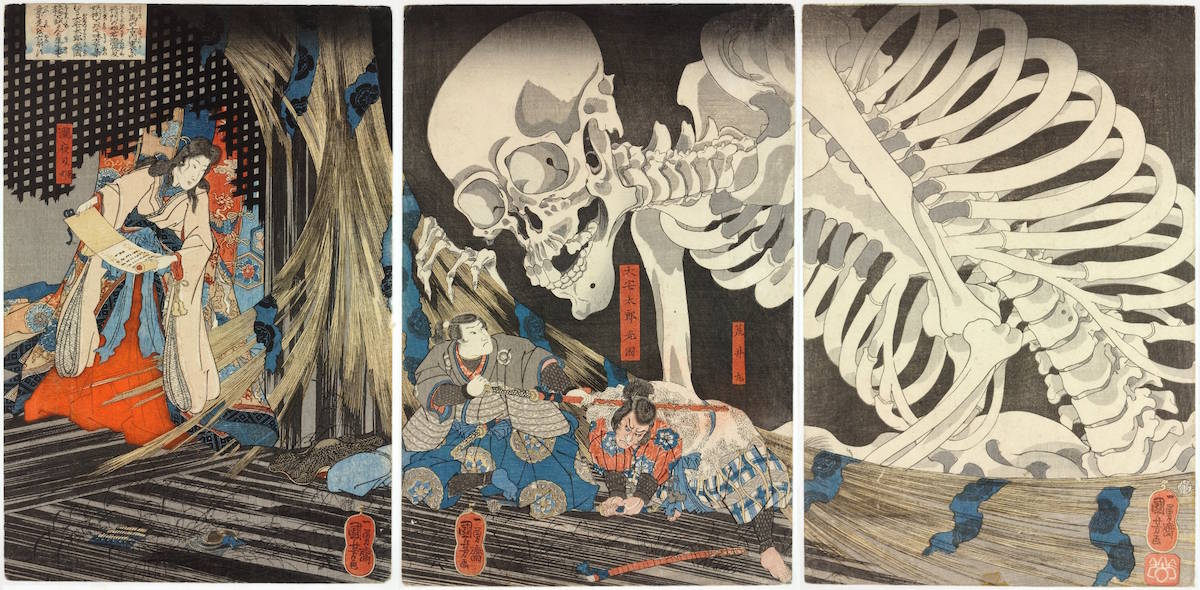
It is also one of the most often performed pieces in the kagura canon.
In the version often depicted in kagura performances begin with the distraught daughter of Masakado, Satsuki-hime, performing a ritual at Kifune Shrine. She awaken and calls upon the violent aramitama aspect of the shrine’s deity, to bestow the power of onmyōdō sorcery on her in order for her to avenge her father’s death. The deity grants her Satsuki’s wish and instructs her to take the name Takiyasha-hime (made up of the characters for waterfall (taki 滝) demon warrior (yasha 夜叉) and princess (hime 姫).)
Takiyasha-hime returns to her father’s ruined fortress of Sōma Castle in Shimosa province and raises a force, not only of retainers still loyal to her father’s cause, but using her newly granted magic powers, an army of yōkai monsters. The warrior Ōya no Tarō Mitsukuni, who is also a practitioner of onmyōdō, gets wind of Takiyasha-hime’s plan to attack the court and sets out to investigate. One version of the story goes that on his arrival at Soma Castle, Takiyasha-hime disguises herself as a prostitute and tries to seduce Mitsukuni. Suspecting a trap, Mitsukuni talks of the brutal nature of the death of her Matsukado and Takiyasha-hime, unable to not contain her emotion, reveals herself. She later ambushes Mitsukuni with an army of skeletons and yōkai – it is this ambush that is depicted in the Utagawa Kuniyoshi woodblock print mentioned above, when Takiyasha-hime summons a gigantuan gashadokuro skeleton to attack Mitsukuni. Takiyasha-hime seems like she should be the hero of the piece, but her attempt to avenge her father’s death is ultimately thwarted and she is killed by Mitsukuni.
The Iwami/Hiroshima Kagura version of the story is a much simplified, but nonetheless spectacular, telling of the legend, usually played in 35-40 minutes.
Here an interpretation by the Miyanoki Kagura Troupe, is one of Hiroshima most popular troupes with an avid following, complete with English subtitles courtesy of RCC which have been working to make Hiroshima Kagura more accessible to non-Japanese viewers.
Generally the story goes as follows
- Takiyasha-hime performs rituals to summon the deity at Kifune Shrine and she is granted the ability to use onmyōdō sorcery.
- Takiyasha-hime, preceded by two of her long-haired henchmen, performs 2 dances carrying long naginata bladed spears with an interlude in which Takiyasha-hime explains the fate of her father and desire for revenge.
- Ōya no Tarō Mitsukuni who carries a nushi shinto staff with paper streamers accompanied by a retainer dressed in the distinctive tall conical hats that indicate that they are affiliated with the Heian court in Kyoto appear as they make their way to confront Takiyasha-hime.
- Takiyasha-hime’s long-haired henchmen come on stage and make a powerful speech and perform dance.
- Takiyasha-hime appears, makes a speech and the 3 perform a dance.
- The imperial warriors approach and confront Takiyasha-hime. Her henchmen appear and they engage in an intricately choreographed battle with the imperial warriors during which Takiyasha-hime leaves the stage.
- After the henchmen are dispatched Takiyasha-hime makes a spectacular entrance and the climactic battle ensues during which Takiyasha-hime shapeshifts between her human appearance and that of a series of increasingly grotesque demons. Finally defeated, she returns to human form, makes a last speech which is greeted with great applause and she meets her end at the sword of Mitsukuni.
- Mitsukuni makes a final speech and the play ends with one last whirling dance performed by the imperial warriors who have put an end to rebellion and ensured continuing authority of the emperor.
Read more about Takiyasha-hime on Yokai.com.


